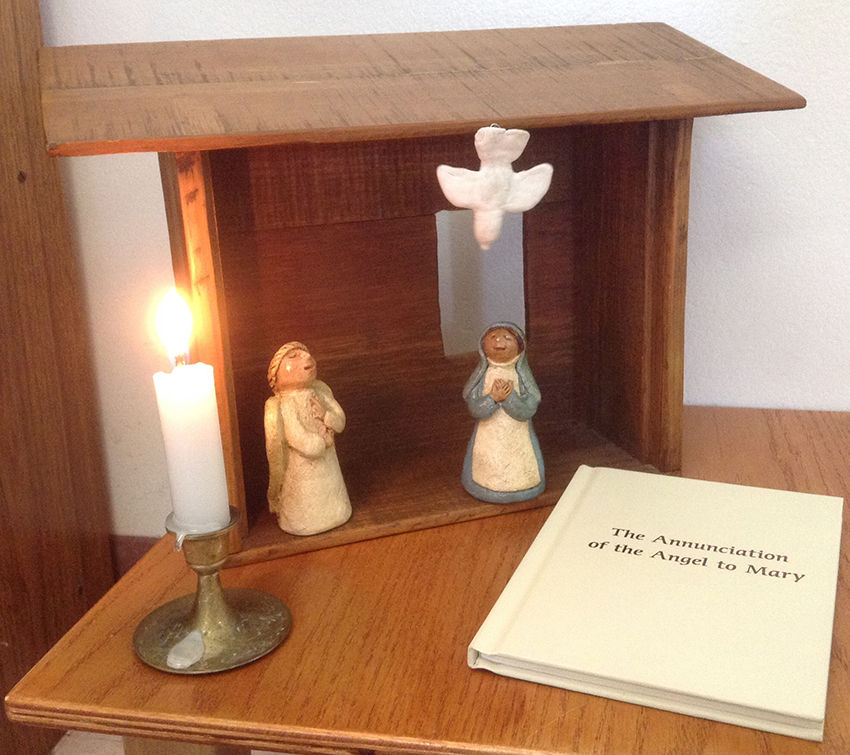Sofia Cavalletti (1917-2011), co-foundress of the Catechesis of the Good Shepherd, developed a three-level, nine-year method of religious education for children based on Montessori principles.
A native of Rome and a Hebrew scholar, she had neither the background nor interest in children’s education. But asked by a colleague in 1954 to teach a religion class to young people, Cavalletti read aloud from the book of Genesis. And a 7-year-old named Paolo, wept.
Those tears of joy amazed her. Through a teacher named Gianna Gobbi, Cavalletti learned of the child’s natural capacity for contemplation, love of order and silence and delight in work.
Together they developed a space for combined learning and worship that they called an atrium, and a method — the Catechesis of the Good Shepherd (CGS) — that has changed very little to this day.
A couple of Saturday mornings ago, I drove to Fillmore, a ranching town outside Santa Paula. Here, Richena Curphey, a librarian at Thomas Aquinas College by day, has established a CGS atrium for the children of St. Francis of Assisi parish.
She started five years ago, buying or begging or making the materials herself, setting up and breaking down the entire atrium for each session. This year, at last, the parish has given her a permanent room. “One of the primary roles of the catechist is to maintain order in the space, to prepare the environment,” she said. “We’re not teachers so much as co-wonderers with the child. The only teacher in the atrium is Christ.”
Miss Richena, as the children call her, has Level 2: 6-to-9 year-olds. Level 1 meets a couple of doors down.
The children gather outside, sing a couple of songs to settle, then line up to process to their respective atriums. They kick off their shoes before entering. Their voices lower.
“When we come into the atrium, we control our bodies.” Everything in the atrium has a sacramental dimension. There are cabinets, bookshelves, a lectern with a large maroon Bible, a wooden crucifix. Potted plants, a papier-mâché globe with a dot marking the land of Israel, an hourglass. Cubbyholes holding markers, colored construction paper and pasting work.
The children sit before a low prayer table. One little girl is invited to light the candle. Another child is invited to read the “maxim,” a Bible verse printed in large letters on a wooden placard. Today’s is, “Be perfect as your heavenly Father is perfect” (Matthew 5:48).
“I wonder what Christ meant when he said that. Do you think that’s easy?” Miss Richena asked.
“Well, not super easy,” one tot offered, “because God is perfect and we all sin.”
“He gives us free will so we can decide,” another chimed in.
“We wouldn’t even live without Jesus ‘cause he breathes into us,” a third observed.
“During Lent I encourage you to use the maxims as a way to get ready for Easter. And now you might want to find some work,” Miss Richena said.
The kids wander to various stations opening boxes, culling through folders.
One little boy unrolls a rug on which to sit and draw. Two girls sit side by side and pluck at a kid-sized lap harp. Another girl carries a tray prepared for flower arranging.
“The child can choose any work he or she has been shown how to use,” explained Miss Richena. “How do you know they’re getting it with no workbooks, no tests? Because the catechists have to be observing, making mental notes, guiding, helping.”
A lad, very much after my own heart, piped up, “Can you teach us to do the bread-baking work? And when we’re done can we eat it all instead of throwing it away?”
As he and a little girl measured and mixed, Miss Richena read from the Gospels: “Jesus said, ‘The kingdom of heaven is like yeast that a woman took and mixed with three measures of wheat flour until the whole batch was leavened.’” (Matthew 13:33)
“Why do you think Jesus says three measures of flour but only one of leaven and yet the leaven spreads all through the loaf?” she asked.
“Because you only need a little bit of love,” the boy burst out, “and that changes everything!”
Other kids gather around a shelf with materials to think about the Mass, highlighting key gestures and moments of the liturgy. There are miniature versions of the cruets, the paten, the corporal.
At the end of two hours, the kids know to clean up, put away and file their work. To close, they gather in a circle, pass around a prayer object that is used to facilitate taking turns and pray:
“I pray for all the species of animals on earth.”
“I pray for the new baby.”
“I pray for more rain to come.”
After they leave, Miss Richena said, “It’s so much easier simply to buy a workbook. But CGS has both an intellectual and a relational component. The child is building a relationship with Jesus Christ. That takes time, quiet and someone who’s willing to be patient.
“But, oh, what great work it is. It is God’s work in the hearts of the children and in my soul.”
Heather King is a blogger, speaker and the author of several books.

